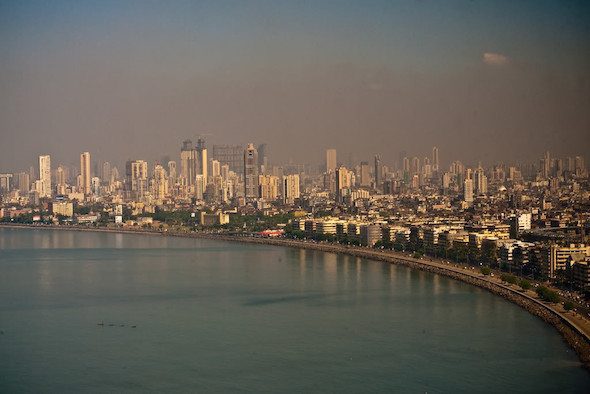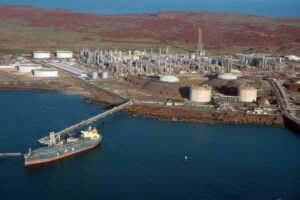As Australia’s prime minister comes under fire for using his visit to India this week to spruik Australian coal, a new report has found that distributed rooftop solar could supply around half of the peak power consumption of the sub-continent’s biggest city: Mumbai.
The report, released on Monday at IIT-Bombay, finds that Mumbai has a a total potential of 1,720MW of solar energy across its rooftops, which is more than 50 per cent of its peak consumption of about 3,200MW generated through conventional sources during summer.
And while putting solar on every rooftop in the city is an unlikely scenario at this stage, experts believe realising even 20 per cent of this potential would be more than good enough to meet the growing demand of the city’s burgeoning middle class: According to estimates, Mumbai’s peak demand is expected to increase to 4,108MW in 2019-20.
India’s middle class growth, as well as the need to provide electricity to the millions of Indians currently without any grid power at all, have combined to create what Malcolm Turnbull has described as an ”enormous need” for more electricity – a need he hopes to capitalise on.
“India has a massive program of expanding electrification across the country and Australian coal has a very big role to play in that,” he said this week as he met with Indian coal billionaire Gautam Adani, whose company is deliberating its final investment decision on the $21-billion Carmichael coal mine in Queensland’s Galilee basin – Australia’s largest, if built.
Turnbull’s meeting with Adani executives was particularly concerning in light of the Indian company’s bid for a $900-million federal government loan for the railway that would link the mine to port.
It has caused dismay in Australian environmental circles, who say the PM is putting Australian coal exports ahead of the health of one of the nations greatest natural assets, the Great Barrier Reef, which is already believed to be in terminal decline due to pollution and global warming.
But even putting environmental and climate concerns aside, other critics of the proposed Adani mine argue it will wind up a stranded asset, as countries like India shift away from coal power to cheaper, and smarter, resources. Like distributed solar.
According to ‘Estimating the Rooftop Solar Potential of Greater Mumbai’ – which the Times Of India reports was put together from the research and findings of five organisations using GIS mapping of all structures in Mumbai, ward-by-ward division, BMC’s existing land use (ELU) maps and 3D mapping to discount areas covered by shadowing.
The findings revealed that a major share of Mumbai’s future electricity generation could eventually come from the rooftops of Mumbai’s residential buildings, but also suggested targeting government buildings first would be the best strategy, initially.
“The easiest way to achieve 20 per cent of the 1,724MW would be to target government buildings,” said Professor Juzer Vasi, department of electrical energy at IIT-Bombay, and member of the project team.
“They generally are directed to reduce energy consumption. Railways too have a reasonably good potential.”
Meanwhile, a survey conducted by the team shows a majority of people are keen to install solar, and more agreed to do it if the government provided subsidies.
Among those interested in installing it, the survey found more than 60 per cent would do so to support green initiatives. Interestingly, 30 per cent of those who said they were not interested in installing rooftop solar claimed to have no knowledge of the technology.









